
Your Brain at Work LIVE | The Neuroscience of Psychological Safety
Organizational survival in the midst of accelerating change and complexity depends on employees’ sense-making, adapting, and taking risks.
Thank you for searching the NeuroLeadership Institute archives. Here’s what we were able to find for you.
Still having difficulty finding what you’re looking for? Contact us.

Organizational survival in the midst of accelerating change and complexity depends on employees’ sense-making, adapting, and taking risks.

The latest research in the NeuroLeadership Journal introduces an actionable framework for creating psychological safety in organizations.
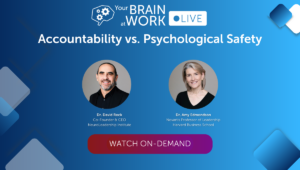
Join Dr. Amy Edmondson (Novartis Professor of Leadership, Harvard Business School) and Dr. David Rock (CEO and Co-Founder, NLI) in the last of our 3-part series. They’ll lead the NLI community in an exploration of how psych safety has the power to boost accountability and engagement, thereby driving sustainable business results over time.

Is it time for the pendulum to swing back toward a focus on performance and less on people?
Many leaders today feel the pendulum has swung too far toward the employee, and cringe when they hear about increasing psychological safety.
Are they right, or are they missing something important here? Are these two ideas in opposition? Is it possible to truly have one without the other?
Join Dr. Amy Edmondson and Dr. David Rock as they robustly debate these and other important questions.

Psychological safety and accountability are often thought to be in conflict, but in reality, they’re both essential components of high-performing teams.

In the pursuit of results, leaders don’t have to choose between kid gloves or command-and-control.
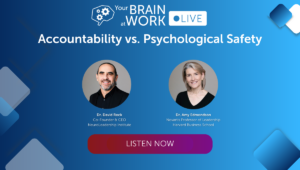
This week, join Dr. Amy Edmondson (Novartis Professor of Leadership, Harvard Business School) and Dr. David Rock (CEO and Co-Founder, NLI) in the last of our 3-part series.

Four takeaways for fostering a less toxic workplace.
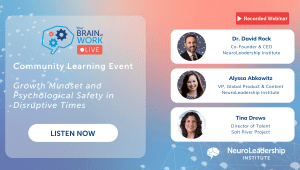
This week on Your Brain at Work LIVE, Dr. David Rock (NLI CEO and co-founder) and Tina Drews (Salt River Project Director of Talent), discuss how, through an illuminating partnership with the NeuroLeadership Institute, Salt River Project focused on supporting the needs of their teams to develop the psychologically safe climate that equipped them even further to face crisis head-on in the present and through the future.
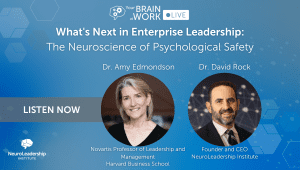
In this groundbreaking episode of Your Brain at Work, Dr. Amy Edmondson joins Dr. David Rock for a wide-ranging conversation about organizational climate, role modeling and, of course, the neuroscience of psychological safety. If you’ve been hearing the buzz about psychological safety and are keen to understand what it’s all about, this episode will provide you with definitive answers.

Not sure what psychological safety is? We break down the basics — and how teams can achieve it.
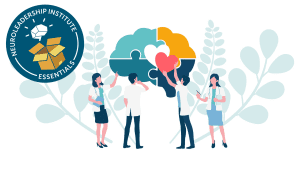
Achieving a psychologically safe workplace is possible, but first, here’s what you need to know.

Although many organizations are striving to create a psychologically safe workplace, it can be hard to picture what that actually looks like. Here are three examples.

Workplace psychological safety can mean a variety of things. Here’s a primer on how to better understand it.

In this article from Fortune, Dr. David Rock (Co-Founder and CEO of NLI) discusses psychological safety concerns within the workplace and how leaders can work towards improvement.

Many organizations mistakenly equate psychological safety with being nice, getting your way, or letting performance slide.

This article from WorkLife explores today’s expectations between employee and employer, including commentary from NLI’s Distinguished Faculty, Leadership and Performance, Christy Pruitt-Haynes, on providing psychological safety.

Dr. David Rock (Co-Founder and CEO of NLI) and Evynn McFalls (Global Vice President, Marketing & Brand at NLI) explain the concept of psychological safety and how organizations can implement best practices for their people.
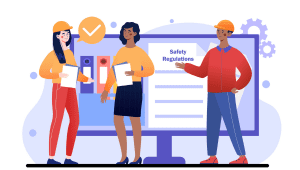
Saying safety is your top priority isn’t enough. Here’s how to follow through with actions.

Growth mindset, psychological safety, and accountability must work together for effective leadership.

The concepts of growth mindset, psychological safety, and accountability define an effective new type of leadership.
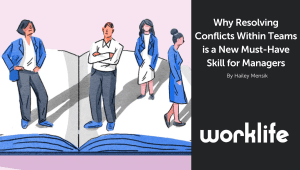
This article from WorkLife prepares managers for today’s expectation of resolving workplace disputes and provides advice from NLI’s Global Head of Culture and Leadership, Matt Summers, on how to do so using psychological safety.
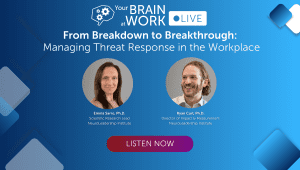
How do organizations that prioritize psychological safety differ — in terms of business performance — from those that don’t? What cognitive levers should organizations think about when executing change initiatives in order to manage threat, motivate their teams and drive positive business outcomes? On this episode of Your Brain at Work Live, Dr. Emma Sarro and Dr. Ryan Curl provide answers to these questions and more — sharing key findings from our latest NeuroLeadership Journal, “Managing Threat Response in the Workplace”.

In a discussion on listening deeply, host Barbara Steel, Head of NLI’s Performance Practice, is joined by Paulette Gerkovich, a Senior Consultant at NLI, and Dr. Michaela Simpson, one of NLI’s Senior Scientists. Together they talk through what listening circles can look like in organizations, the science of psychological safety and perspective taking, and the potential pitfalls of getting it wrong.

Bob Johansen, distinguished fellow at the Institute for the Future, and Amy Edmondson, Harvard professor and expert on psychological safety discuss what we can do today—for ourselves and for others—so that tomorrow, and the days after that, we’ll all be in the best position to stay healthy and successful.

Discover the top 5 most-read blog articles from the Your Brain at Work blog — and find out what the smartest leaders are focusing on right now.
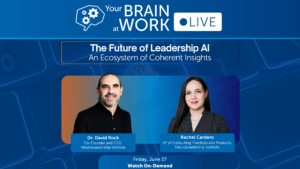
Join David and Rachel as they reveal how neuroscience is shaping the newest version of NILES — and what exciting developments are on the horizon.

Don’t miss this opportunity to discover how NILES can be your partner in achieving smarter, more effective leadership.
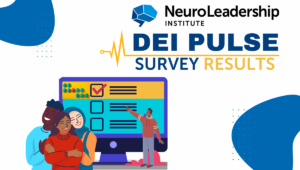
The NeuroLeadership Institute’s DEI Pulse Survey revealed that organizations are continuing their diversity, equity, and inclusion initiatives — but they struggle with communication.

In this session, Drs. David Rock and Emma Sarro, will explore the latest neuroscience research on why the right habits are so important to build and how to do it in a way that sticks.
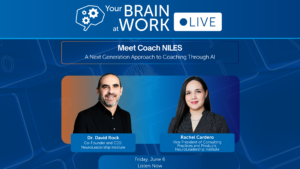
eet the world’s smartest leadership coach, NILES, NLI’s Neuro Intelligent Leadership Enhancing System. Designed to make leaders smarter, faster.
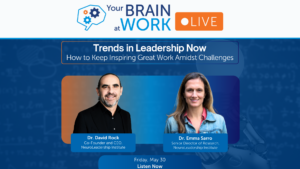
Join Drs. David Rock and Emma Sarro as they discuss the right mindset to lead in a crisis and the necessary skills all leaders need to maintain productivity and efficiency, reduce uncertainty, and increase relatedness.
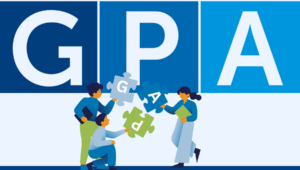
Learn about the three essential priorities for modern leaders with NLI’s new Leadership GPA quiz and webinar series.

By prioritizing these capabilities, energy and utilities leaders can ensure their organizations remain resilient in the face of relentless change.
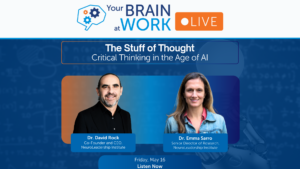
Join Drs. David Rock and Emma Sarro as they discuss what “better” thinking means from the perspective of the brain and how AI can be used to get there.
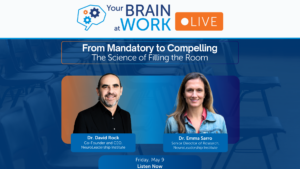
In this timely conversation, Drs. David Rock and Emma Sarro will explore insights from both science and decades of practice, including the non-obvious downsides of making learning mandatory, and three areas to focus on when making experiences truly compelling.
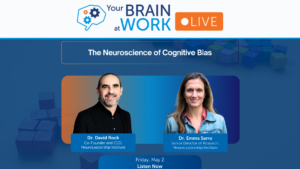
Uncertainty surrounds the future of DEI. Many organizations plan to continue their DEI work, yet they’re likely to face a number of challenges along the way.

When feedback feels safe and empowering, it becomes a tool for growth rather than a source of stress.
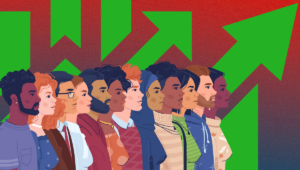
Here’s how organizations can advance diversity and inclusion (D&I) initiatives amid multifaceted attacks.

A recent article in the NeuroLeadership Journal discusses the need for organizational accountability and the benefits of shifting from a punitive to a proactive approach.
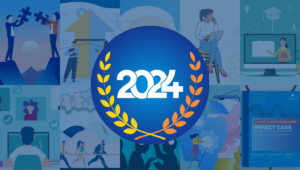
This year, leaders were especially interested in learning about accountability and staying adaptable through change.

Here’s a small sampling of insights from more than 20 virtual sessions.

Post-pandemic, the healthcare industry has had to adapt in major ways to sustain leaders and employees.

Accountability became a major topic in 2024. Here’s how leaders can build a healthy, high-performing culture.

Here’s how leaders can help create an environment of shared accountability in their organizations.

Here’s how finance leaders can help create an environment of shared accountability in their organizations.
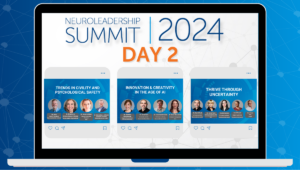
The second day of the 2024 NeuroLeadership Summit featured discussions about AI, civility, burnout, and much more.
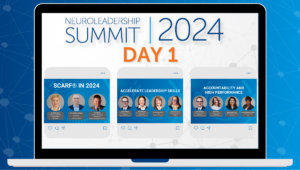
Day 1 of the 2024 NeuroLeadership Summit provided valuable insights to help leaders thrive through change.

To realize the potential of diverse teams, organizations must move beyond mere representation to embrace equity and inclusion.

Civility isn’t just about being nice — it’s about creating a workplace where everyone can thrive.
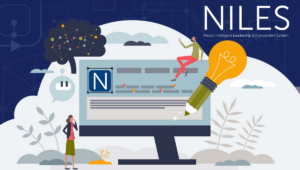
NLI’s chatbot can give science-based leadership advice, brainstorm ideas, and more.
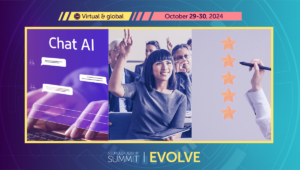
Leaders everywhere are thinking about artificial intelligence, leadership development, and building cultures of high performance.

AI can help drive organizational change — but only if we understand human behavior.
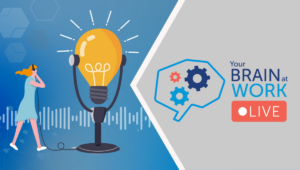
Add these episodes to your playlist for the best brain-friendly advice for today’s leadership challenges.

Hybrid work has changed the workplace dramatically — and performance management must change with it.
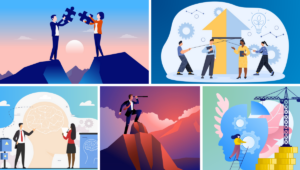
These five topics resonated most with our readers in the first half of the year.

Effective leadership requires thinking ahead, owning commitments, and anchoring on solutions.

Learning and development are overdue for disruption. NLI’s latest innovation updates learning solutions for the new world of work.

A recent article in the NeuroLeadership Journal discusses strategies to understand and mitigate social threat responses in the workplace.

The five biggest leadership trends for 2024, according to NLI founder and CEO David Rock.

How you can leverage AI to improve skills and drive innovation.

Explore key insights and coverage from the 2023 NeuroLeadership Summit in our comprehensive write-up. On-demand recordings available now.

Some of the world’s brightest science and business leaders convened to share solutions to major workplace challenges, including the RTO debate, DEI, AI disruption, and reskilling.
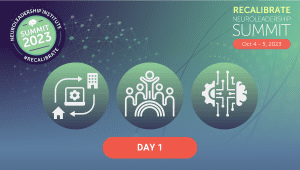
Day 1 of the 2023 NeuroLeadership Summit left attendees with a wealth of ideas to recalibrate on topics ranging from DEI to performance management to burnout.

Contrary to popular belief, group brainstorming doesn’t actually produce more or better ideas. Here’s what to do instead.
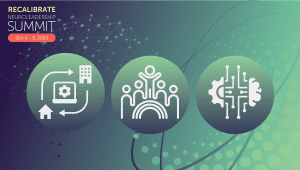
Hot-button issues like hybrid work, the future of DEI, and AI disruption will take center stage at the 2023 NeuroLeadership Summit. Here’s what leaders can expect to learn.
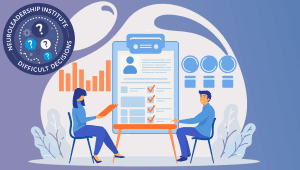
Employees are often reluctant to give their managers honest feedback. Here’s why, and what to do about it.

Incorporate these brain-friendly elements to make your office a place employees want to be.

Companies hold retreats to help employees bond with one another, increase engagement, and foster creativity. Here’s how to plan a retreat to maximize insights.

Transparency can’t avert every crisis, but it can shed light on the path ahead.

In a society obsessed with transparency, leaders are encouraged to reveal their innermost thoughts and feelings. But is there such a thing as too much sharing?

Disagreements happen, but with the right approach, leaders can diffuse the tension and find productive solutions.

Becoming a manager means changing your mindset and approach. Here are five tips for navigating the change.

Workplace conflict doesn’t have to be negative. Here’s how to help your team have a good fight.

Leaders today face a deluge of demanding tasks and a mounting confidence crisis. Here’s how to regain courage and conviction.

In his article for Quartz, Marshall Bergmann (SVP of Global Sales at the NeuroLeadership Institute) provides 5 science backed ways that can help drive employee and leadership engagement when resources are limited, through NLI’s SCARF model.

Nearly a decade ago, the NeuroLeadership Institute published an influential article titled “Kill Your Performance Ratings.” Here’s an update on what we’ve learned since.
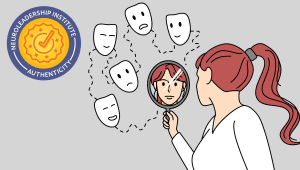
Being authentic means being vulnerable, taking risks, and talking openly about your weaknesses.
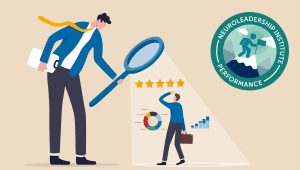
Here’s why we should push ourselves out of our comfort zone at work.

Here’s why we should push ourselves out of our comfort zone at work.

Organizations are systematically undervaluing critical aspects of employees’ work by measuring only what’s easy to quantify.

Leadership naturally confers high social status — which can make workplace interactions threatening. A guide for leaders on how to manage status at work.

Organizations seeking to support their workforces should start with listening. It won’t erase inequity, but it can help us define what changes are needed.

We spoke with three neurodiversity advocates about how to create more neuro-inclusive hiring practices and workplace cultures.

Why organizational efforts to belong have failed, and how companies can reframe the idea of belonging.

Dr. David Rock (Co-Founder and CEO of NeuroLeadership Institute) explains to Fortune how proper training can alleviate perceived threats in the workplace during a time of conflict.

Some anniversaries are harder than others. Here are three tools managers can use to put focus where it matters.

There are four components that create optimal conditions for learning complex tasks in high stakes occupations: a growth mindset, a safe environment, the will, and the way.
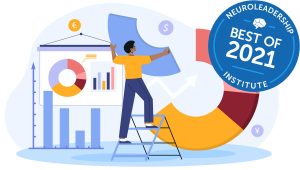
Have a look at some of our most popular content this year in performance management.

There are valid brain-based reasons for hybrid concerns, but responding with surveillance might be more costly than you think.
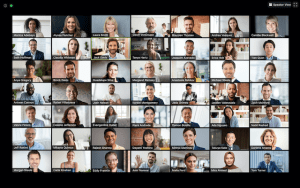
One prevailing debate around remote and hybrid work is that virtual work is necessarily WORSE than any in-person work. But this doesn’t have to be true. Much can be achieved virtually. Here’s a road map.

What three scientific elements should we focus on to create more inclusive Australian workplaces for the differently-abled?

This year has been unlike any other, that’s why we designed a Summit unlike any we’ve ever had. Join us, and these distinguished scientists, at this year’s NeuroLeadership Summit.
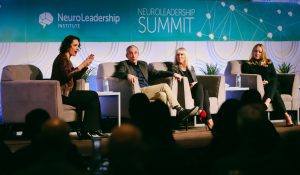
Your organization is facing challenges that were unimaginable a few months ago. That makes this the perfect time to build a better normal, and to attend the NLI Summit.

Speaking up is essential to share ideas, question decisions, and challenge behaviors. Here are a few big ideas that can help any leader raise quiet voices.

Employees who are empowered to speak up and offer feedback to their superiors are more likely to offer ideas on how to improve the business.

In moments of disruption, there’s an opportunity to shift our mindset to find deeper meaning in our work. Brain science can show us how.

Learn the essential habits for leading inclusive virtual meetings and keep your team engaged, collaborative, and innovative in the process.
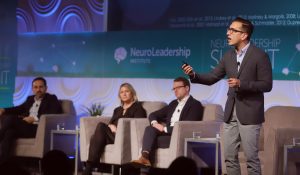
To create a culture of empathy, leaders should recognize that empathy isnt a single trait. Its a suite of skills to practice over time.

More than 200 CEOs have agreed to put societal values ahead of profits. Here’s why brain science says this is a move in the right direction.

There are two key habits leaders can build in their cultures to promote speaking up: minimizing a threat state in speakers and those being spoken to.

Whether someone speaks up at work or keeps quiet often comes down to their sense of social threat or reward, which leaders play a crucial role in creating.

Management transparency has been shown to boost employee engagement, performance, and creativity. But how does transparency drive employee experience?

Organizations often justify a toxic environment and masculinity contest culture with the mentality of “how we do business here.”

It’s tempting to blame toxic work cultures on an unknowable set of factors, but often the answer is much simpler. In an article for Fast Company, author Meghan E. Butler, partner at Frame+Function, noted that toxic workplace cultures are consistently the product of poor leadership. Specifically, toxic behavior often stems from leaders missing (or ignoring) key warning signs in how teams function. Perhaps they see aggressive work styles as signs of passion, or label cases of bullying as harmless fun. Meanwhile, employees get hurt and the culture turns toxic. Understanding SCARF As Butler points out, there are five key social domains that demand leaders’ attention: status, certainty, autonomy, relatedness, and fairness. We call it the SCARF Model. It relies on the widespread neuroscience finding that social threats register in the brain in a similar way as physical threats: Cognitive function suffers and people’s quality of work declines. Toxic behavior can affect any SCARF domain, or several in combination. For instance, it’s threatening to a person’s status when their co-worker openly calls out a recent mistake in a team meeting. And it damages people’s sense of fairness and relatedness (or sense of belonging) when a manager plays favorites by assigning projects only to certain people. Leaders who stay aware of these domains can actively take steps to fix them, in turn creating more psychological safety at work. That means bestowing employees not with social threats, but rewards. Here are examples for each SCARF domain: Status — Leaders can celebrate employees’ contributions to the wider team, and they can celebrate team wins to the larger department or organization. Certainty — Before starting a meeting, leaders can lay out the agenda and clarify the goals he or she wishes to achieve by the end. Autonomy — Leaders can raise employees’ sense of control and ownership over their work by delegating projects across the team, rather than hoarding information and keeping people out of the loop. Relatedness — Inclusive leaders help their employees recognize shared goals, such as hitting sales targets or wrapping a big project. (Contrary to popular belief, highlighting differences may only further divide people.) Fairness — Leaders can create a sense of equality by mitigating biases, such as seeking diverse opinions around the office to reduce what psychologists call “experience bias.” The takeaway Ultimately, toxic cultures form when leaders practice the same unhelpful behaviors over and over again. These actions are seldom intentionally destructive, but unless leaders actively try to develop the correct habits — and create psychological safety for everyone — social threats are bound to arise. As Butler notes, “All of these signs can generally be whittled down to one key factor: Fear. And fear corrodes mental health and productivity.”

Providing clarity and offsetting negative feelings are essential for helping frazzled employees regain composure.
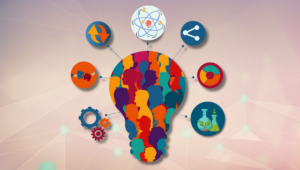
Here’s how organizations can build DEI initiatives that are both legally compliant and strategically beneficial.

Anyone can become a toxic leader without even realizing it. Here’s how to recognize the warning signs so you can change.

Achieving a universal feeling of inclusion can be challenging for even the most diverse teams, but it can be done with the right skills and habits.

We can learn how to become more resilient through lessons from emergency department nurses.

Enhancing positivity in the workplace helps promote resilience and productivity.

Decades of research show that feigning positive emotions at work can have a positive impact on a person’s career aspirations. But beneath the veneer of positivity, what dangers lurk for organizations who only see what’s on the surface for their employees?

There’s a growing argument, and bodies of research from some places, that “work from home” destroys innovation. In reality, it often does exactly the opposite.

How can we equip organizational leaders to handle tense situations and keep their teams productive? De-escalation could be the key managerial skill of 2021.

If leaders want to make the right decisions when it comes to hybrid work, it’s important to consider the question through the lens of neuroscience.

Because anxiety has real implications for productivity, organizations have to address it before anything else.

Unlocking the power of a diverse organization requires creating a sense of inclusion. These three action-oriented ideas can help offer a roadmap.

If leaders can make their organization a psychologically safe place to speak up, they can tap into a wellspring of new ideas from otherwise quiet folks.

Diversity & inclusion isn’t a “nice to have” during a crisis. It’s how organizations ensure the best ideas help solve the most pressing problems.

We can learn a lot from the failed speaking-up moments from ill-fated flights like the Challenger. Learn how to help your team speak up when it matters.
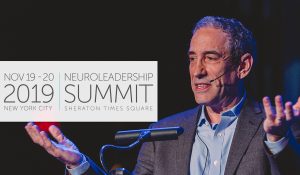
Author and speaker Douglas Rushkoff will give the opening keynote address at this year’s NeuroLeadership Summit, speaking on why we should keep teams human.
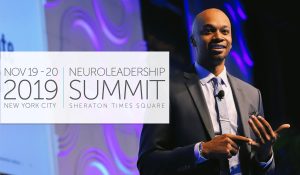
The theme of this year’s NeuroLeadership Summit is “A More Human Organization.” Read more to learn what makes a refocus on people so vital.

Research suggests there are three key components that help teams achieve lasting behavior change: priorities, habits, and systems.
Join millions of employees in creating culture change at scale by reaching out today.

In 2007, David and Lisa Rock and their team had been working in leadership development and executive coaching for ten years, when David coined the term “NeuroLeadership.”ef

North America
Africa
South America
Asia
Europe
Australia
© NeuroLeadership Institute 2025. All Rights Reserved
This site uses cookies to provide you with a personalized browsing experience. By using this site you agree to our use of cookies as explained in our Privacy Policy. Please read our Privacy Policy for more information.